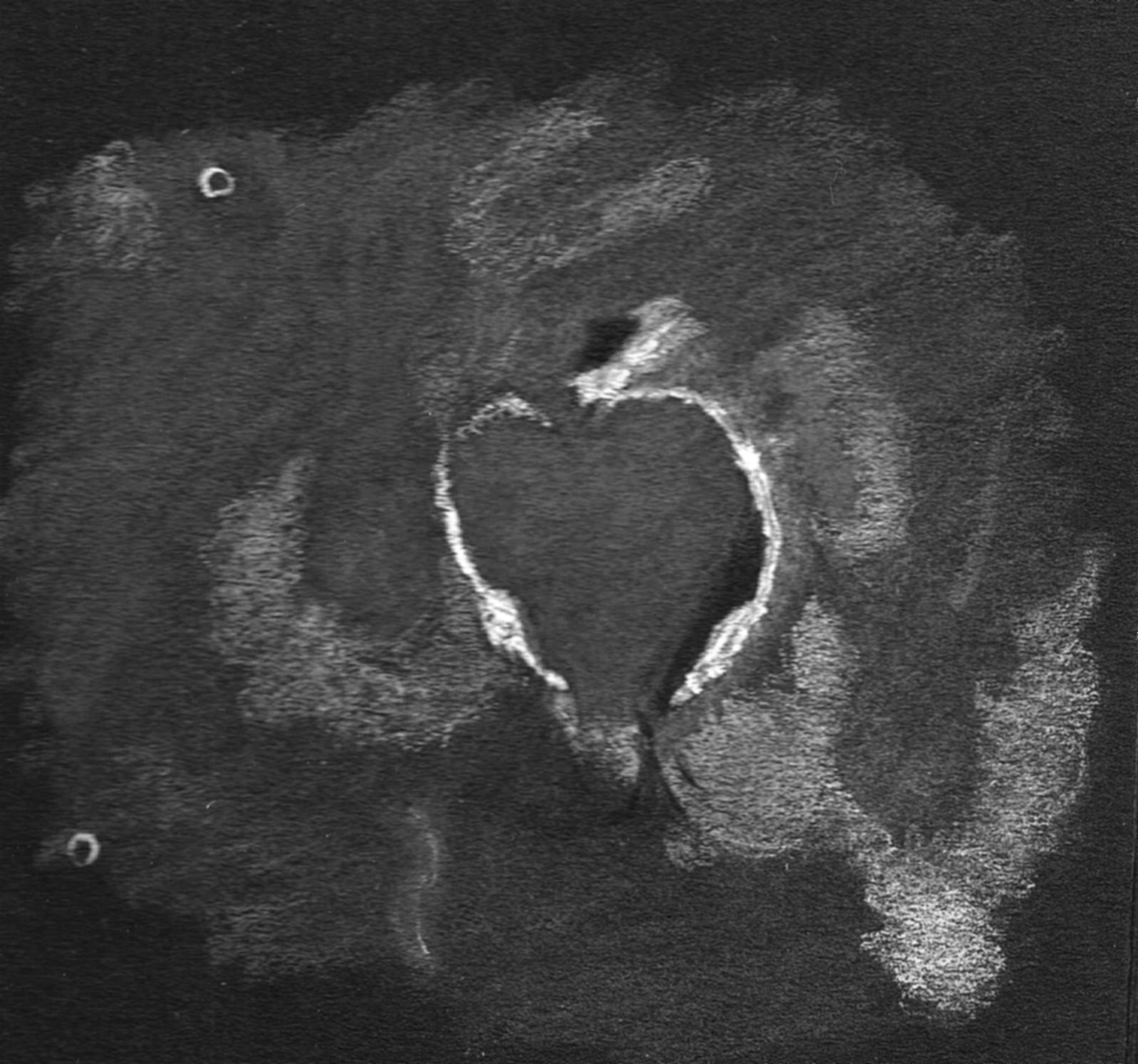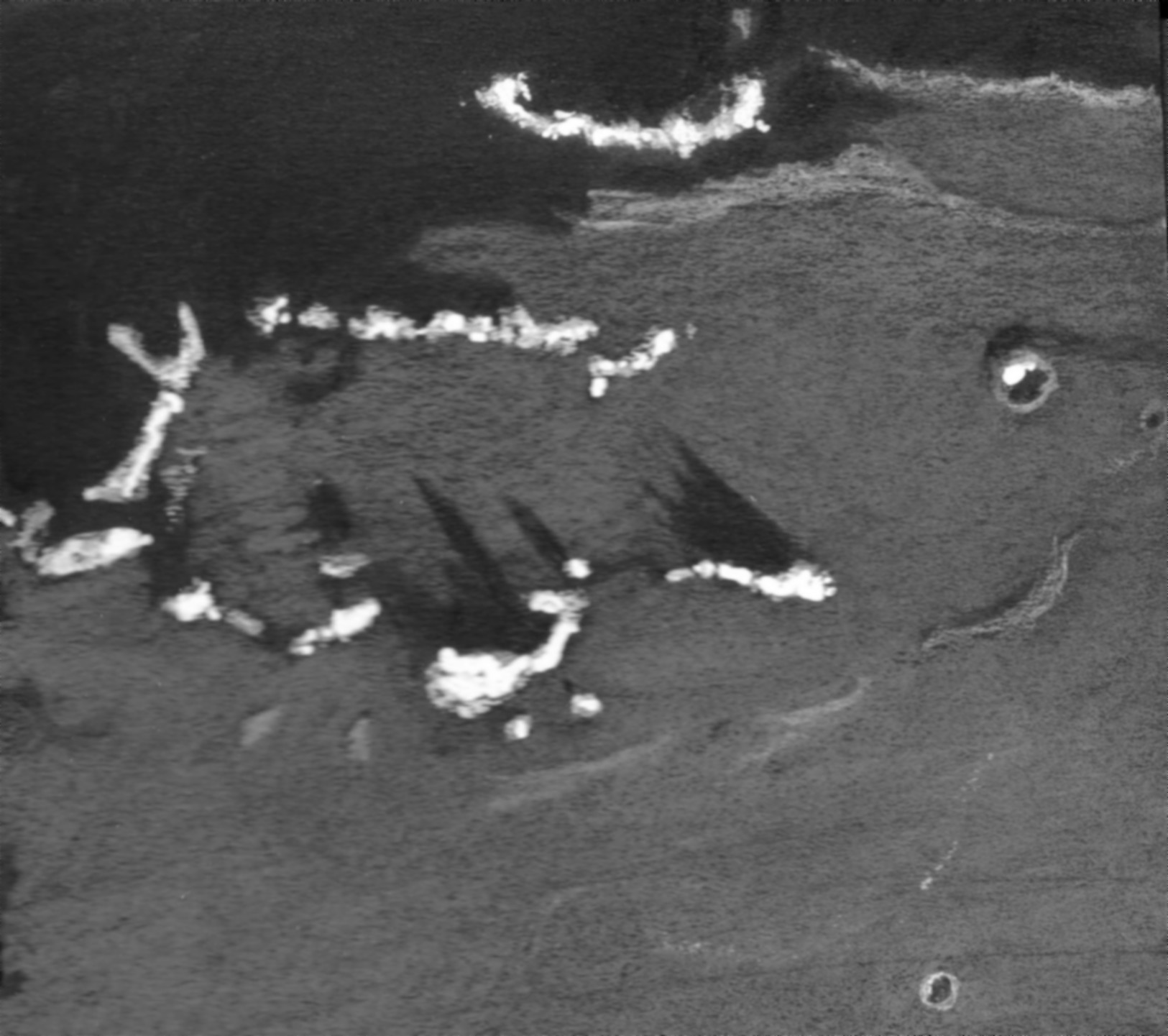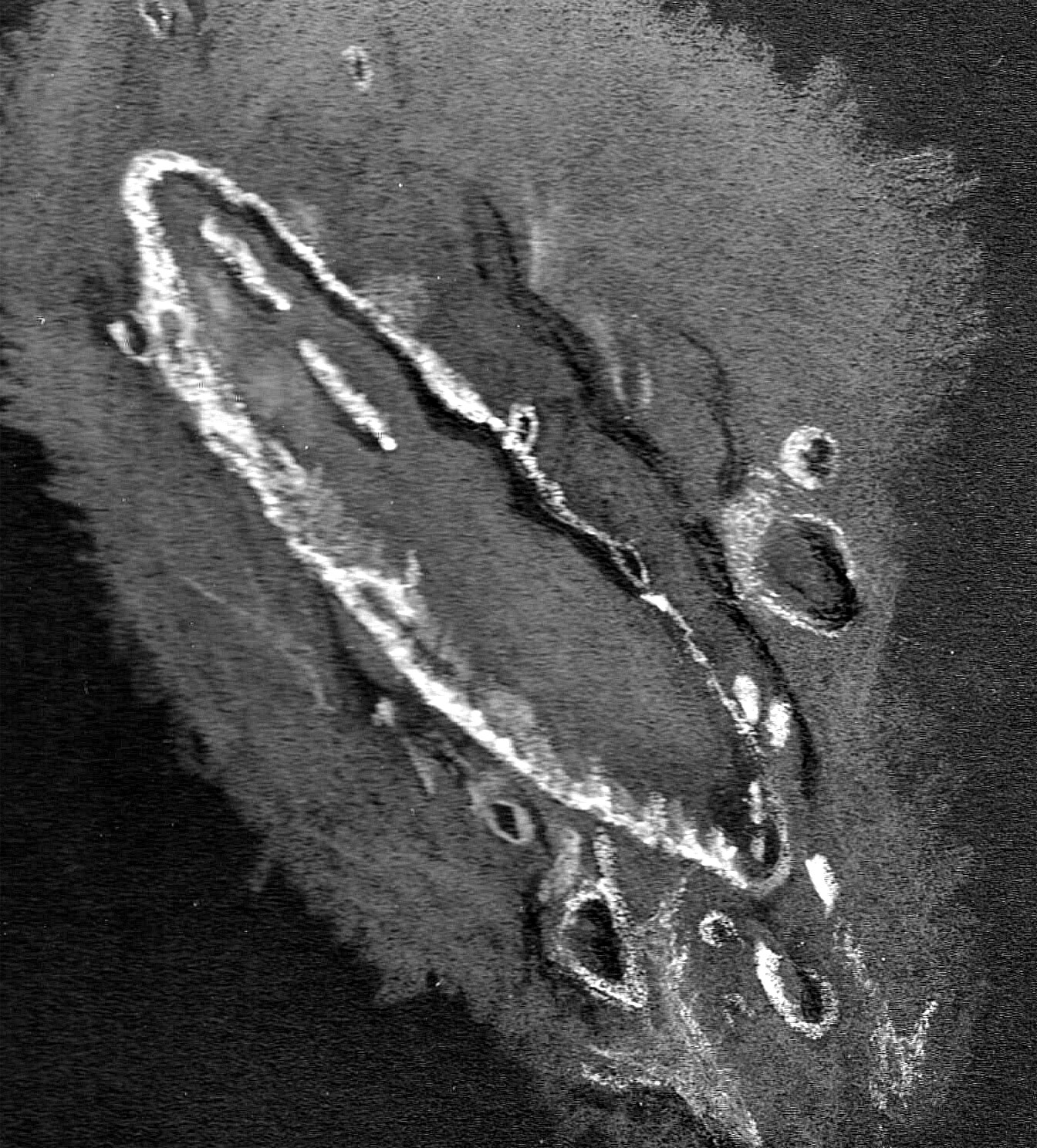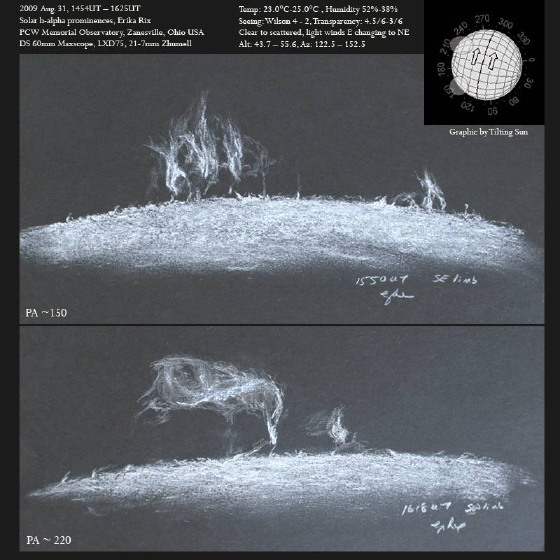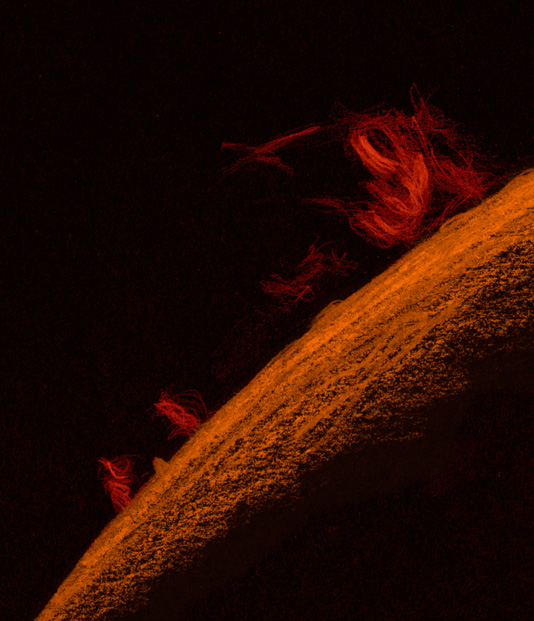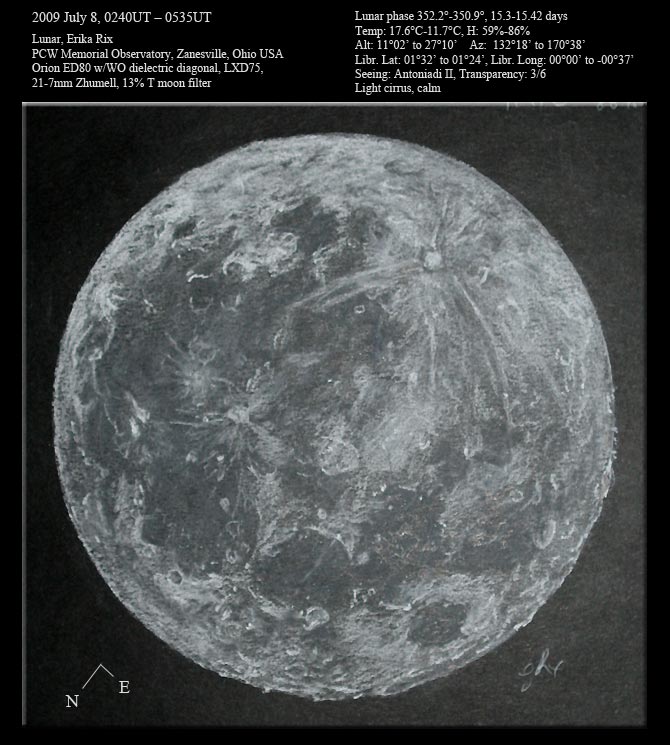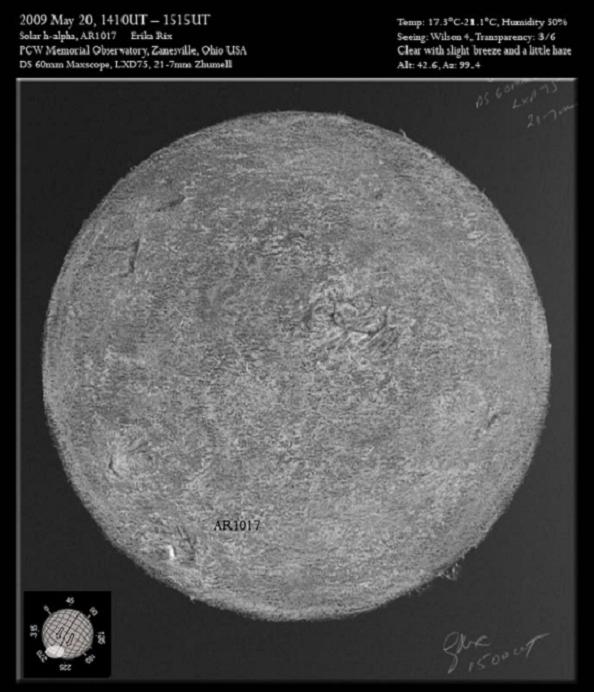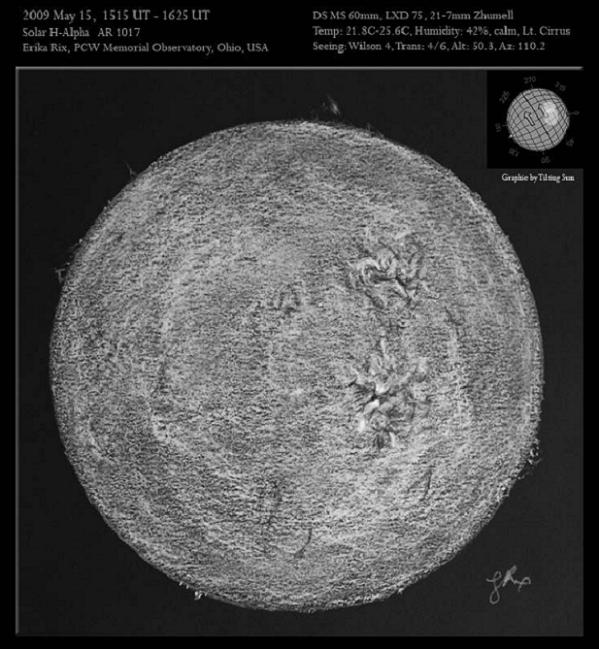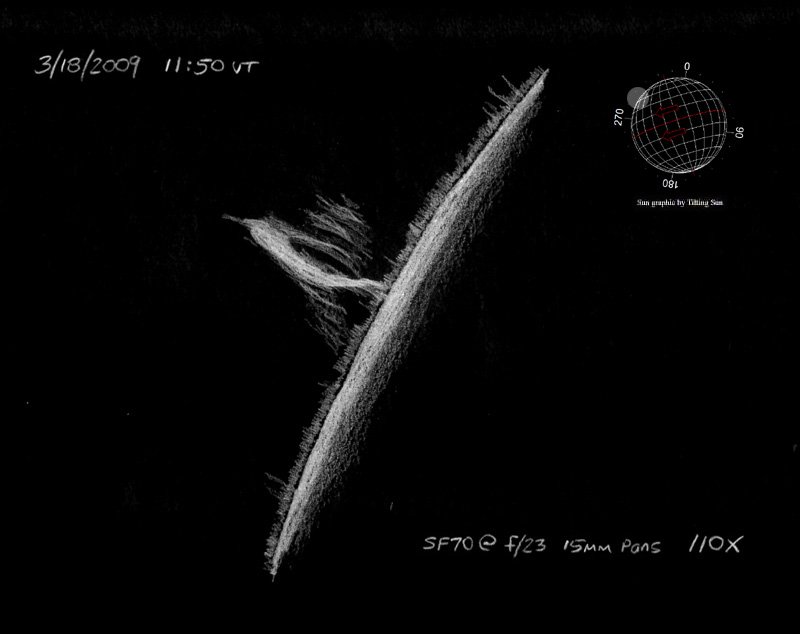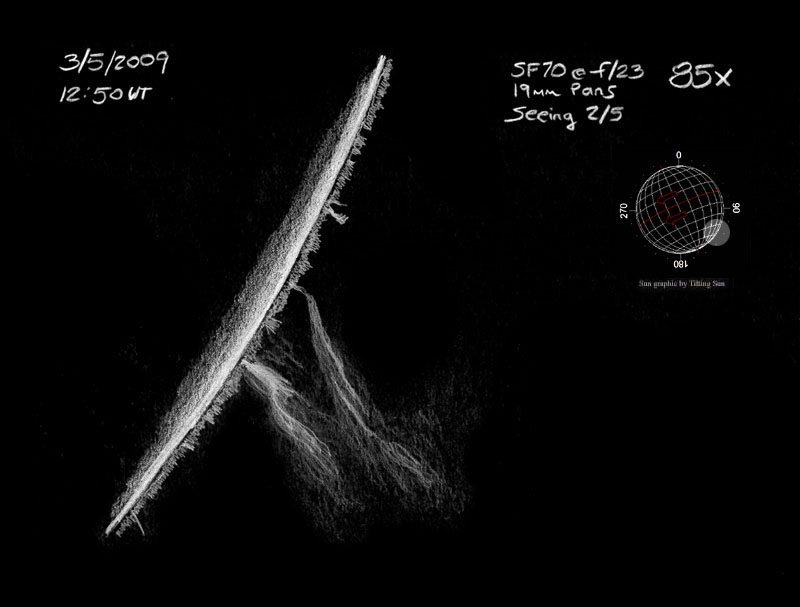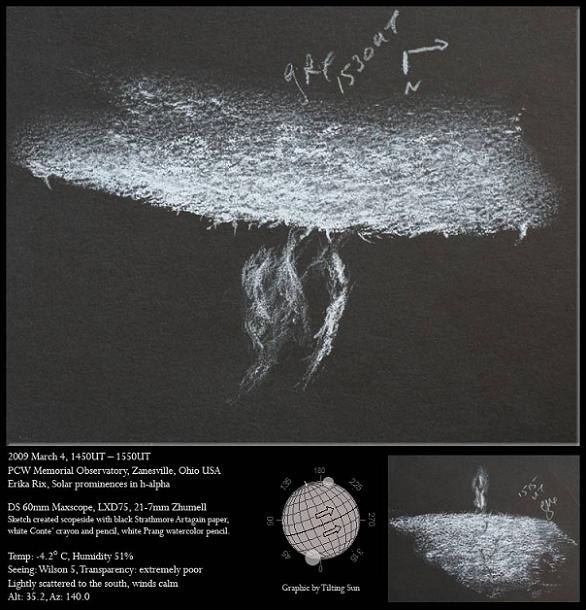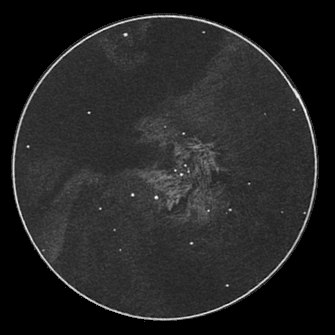
Messier 42 Trapezium
Sketch and Details by Kiminori Ikebe
M42 (NGC 1976) Ori diffuse nebula Difficulty level 1
M43 (NGC 1982) Ori diffuse nebula Difficulty level 2
NGC 1977 Ori diffuse nebula Difficulty level 3
Date of observation: 1995/01/25 22:08
Observing site: Hoshinomura
Transparency/seeing/sky darkness: 2/4/2
Instruments: 30×125 binoculars
Width of field: 1.6‹
This is the brightest and most interesting diffuse nebula among those that are visible from Japan. It shows very complex structures and extremely difficult to draw. North of this nebula a diffuse nebula called NGC 1977 is clearly visible.
NGC 1999: This nebula is relatively bright with complex structures. If this nebula was a separate object, it could attract more attention of observers.
M42: Even at this magnification the four stars of the Trapezium are resolved and a dark band intruding the bright nebulosity from the east is noticeable. There are three stars along this dark band. There is also a dark band south of the Trapezium.
M43: The star at the center stands out and the southeast side of the nebulosity is sharply defined by dark areas.

